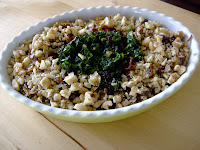This afternoon the Ayurveda academy I attended wrote a great blog pic about Ayurveda. I wanted to share some excerpts from the entry with you especially because one of the reasons Chit Chaat Chai came to fruition was to practice the Ayurvedic teachings about nourishment. I hope the entry gives some insight.
The main source of knowledge in this field are the Vedas, the divine books of knowledge they propounded, and more specifically the fourth of the series, namely Atharvaveda that dates back to around 1000 BC. Of the few other treatises on Ayurveda that have survived from around the same time, the most famous are Charaka Samhita and the Sushruta Samhita which concentrate on internal medicine and surgery respectively. The Astanga Hridayam is a more concise compilation of earlier texts that was created about a thousand years ago. These sources form the greater part of the knowledge base on Ayurveda as it is practiced today.
The art of Ayurveda had spread around in the 6th century BC to Tibet, China, Mongolia, Korea and Sri Lanka, carried over by the Buddhist monks traveling to those lands. Although not much of it survives in original form, its effects can be seen in the various new age concepts that have originated from there.
No philosophy has had greater influence on Ayurveda than Sankhaya’s philosophy of creation and manifestation. Which professes that behind all creation there is a state of pure existence or awareness, which is beyond time and space, has no beginning or end, and no qualities. Within pure existence, there arises a desire to experience itself, which results in disequilibrium and causes the manifestation of the primordial physical energy. And the two unite to make the "dance of creation" come alive.
To use Ayurveda in daily life, one has neither to accept nor even understand this philosophy. But it does provide a deeper insight into how Ayurveda works towards betterment of your health.
Ayurveda therefore is not simply a health care system but a form of lifestyle adopted to maintain perfect balance and harmony within the human existence, from the most abstract transcendental values to the most concrete physiological expressions. Based on the premise that life represents an intelligent co-ordination of the Atma (Soul), Mana (Mind), Indriya (Senses) and Sharira (Body). That revolves around the five dense elements that go into the making of the constitution of each individual, called Prakriti. Which in turn is determined by the vital balance of the three physical energies - Vata, Pitta, Kapha and the three mental energies - Satwa, Rajas, Tamas.
Ayurveda thus offers a unique blend of science and philosophy that balances the physical, mental, emotional and spiritual components necessary for holistic health.




 Machi Bhaat
Machi Bhaat 

